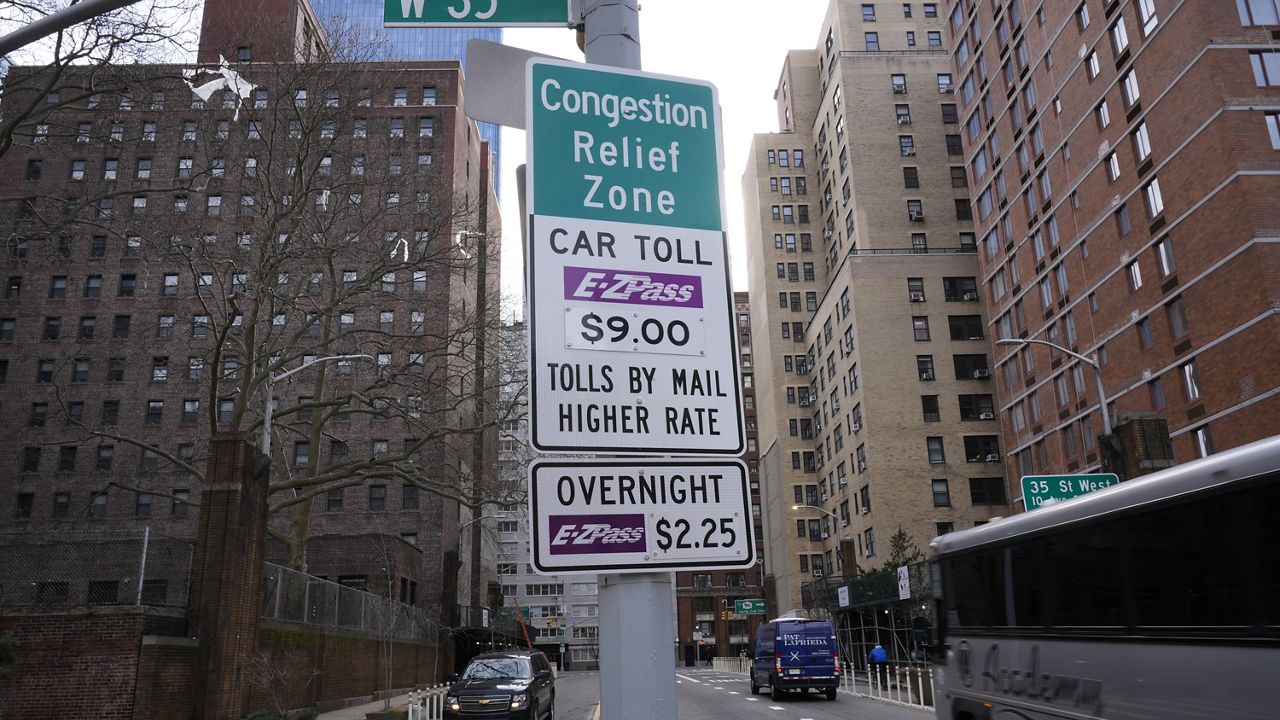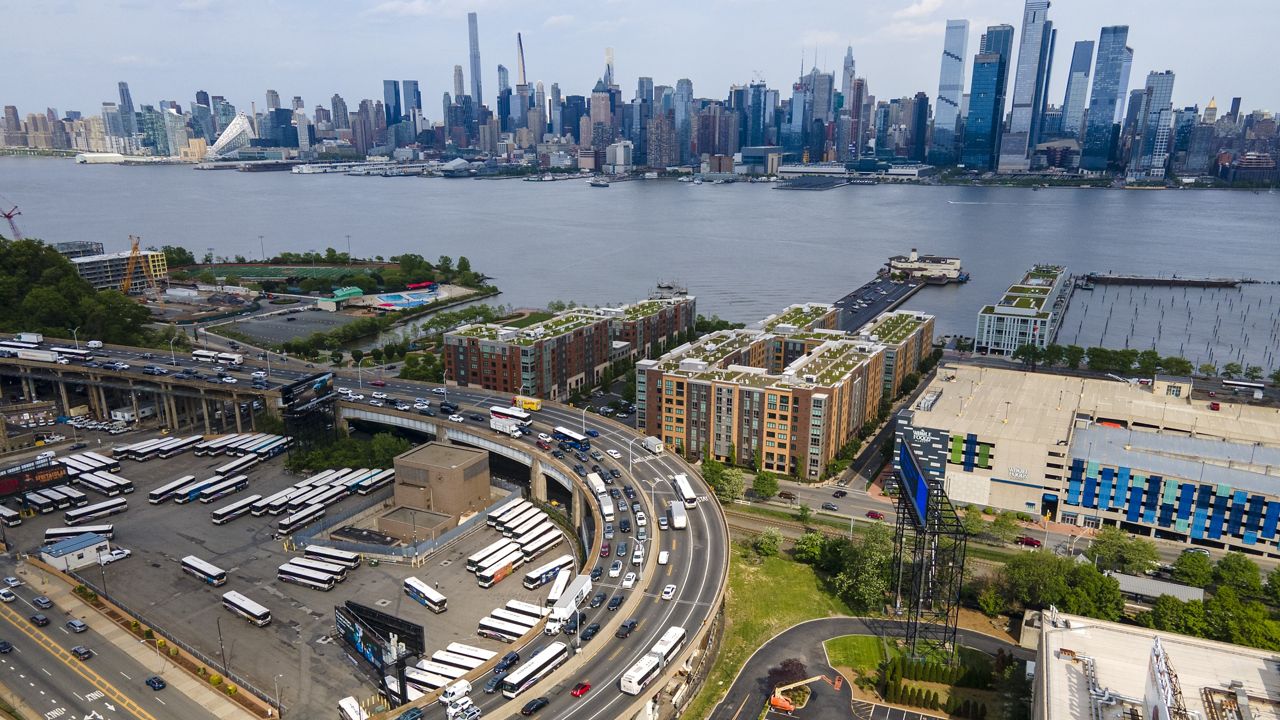Most drivers are likely to pay $15 to enter streets within the city’s proposed congestion pricing zone, a source tells NY1.
According to a draft of a report obtained by NY1, passenger vehicles and passenger-type vehicles with commercial license plates would be charged a $15 toll for entering the district.
Trucks would be charged a $24 or $36 toll for entering the district depending on their size, according to the draft.
Buses that are providing commuter services will be exempt from this toll, the draft said. However, other buses would be charged $24 or $36.
According to the draft, motorcycles would be charged half the passenger vehicle toll, no more than once a day.
Tolls would be charged to vehicles only as they enter the district, according to the draft.
Congestion toll rates would apply from 5 a.m. to 9 p.m. on weekdays, and from 9 a.m. to 9 p.m. on weekends, the draft said.
Toll rates would be 75% lower at night, according to the draft.
The draft said there will be a credit against the daytime toll rate to be provided to vehicles entering through the four tolled entries that lead directly into the district: the Queens-Midtown, Hugh L. Carey, Holland and Lincoln tunnels. Passenger vehicles would pay $5, motorcycles would pay $2.50, small trucks and intercity or charter buses would pay $12 and large trucks and tour buses would pay $20, according to the draft.
Yellow taxis and for-hire vehicles will also be charged per ride, the draft said. According to the draft, yellow cabs will be charged an additional $1.25, and app-based cars like Uber and Lyft will be charged an extra $2.50.
Specialized government vehicles are exempted from the toll, the draft said.
The congestion pricing proposal is the first step. It must be voted on by the MTA board. Then, there is a 60-day review and public comment period.
The board could make changes before the final approval.
Congestion pricing is a policy that charges drivers a fee for entering certain designated zones within a city, typically during stated or peak hours.
The aim of the plan is to reduce traffic congestion, and to encourage the use of public transportation and other alternative modes of travel. The Manhattan congestion pricing zone, also known as the Central Business District, includes all of Manhattan south of Central Park.
The toll will apply to all vehicles on roads at and below 60th Street, except for major highways.
The FDR Drive, the West Side Highway and the Battery Park underpass will be exempt.
There are already some exemptions laid out in existing law. Emergency vehicles and vehicles transporting people with disabilities will be exempt.
The tolling is expected to generate $1 billion annually to help the MTA finance $15 billion in bonds.
The MTA is counting on the congestion plan to go through to fund its capital plan.
The agency recently released its 20-year needs assessment.
Besides extensive projects like the Second Avenue Subway and the Interborough Express, there are critical infrastructures that need to be replaced.
The MTA is hoping to start the program in the spring.







_PKG_CONGESTION_PRICING_HISTORY_CG)